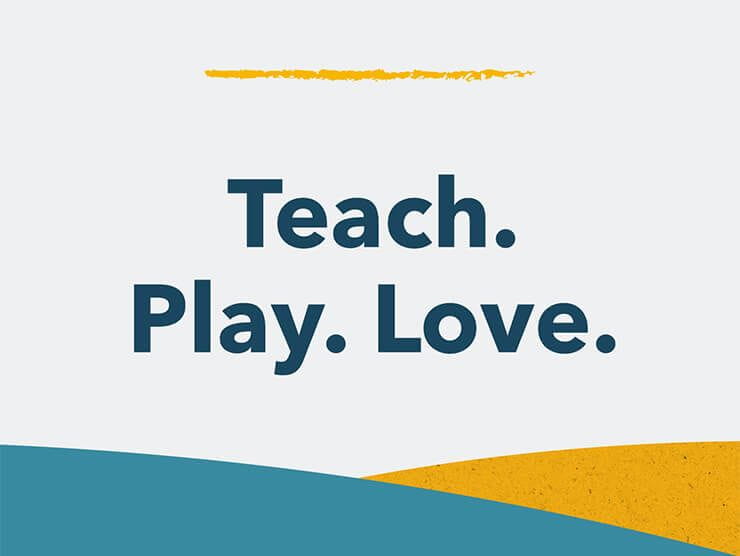Cleo, a 4-year-old preschool child, excitedly told her Mom, "...and then we drank purple milk that came from a purple cow." Webster defines imagination as "the ability to form a picture in your mind of something that you have not seen or experienced; the ability to think of new things." Every child is born with an imagination. At times, parents and adults nurture children's imaginations and take joy in their creative thoughts and acts. Other times, we might (deliberately or unknowingly) stifle children's imaginations, perhaps concerned that children don't understand what's real. Most children older than three, however, know that purple cows don't really exist but enjoy opportunities to imagine and think creatively. Allowing children to use their imagination is helpful and there are many benefits of pretend play in child development. According to Susan Engel, Ph.D., author of "Real Kids: Creating Meaning in Everyday Lives," two and a half year olds understand the distinction between real and pretend. But when they're in play mode, they can lose sight of that distinction, or it becomes unimportant.
Creative Thinking & Imagination for Child Development
Einstein said, "Imagination is more important than knowledge." Imagination is the door to possibilities. It is where creativity, ingenuity, and thinking outside the box begin for child development. Imaginative and creative play is how children learn about the world. During imaginative play, children manipulate materials, express themselves verbally and non-verbally, plan (intentionally or unintentionally), act, interact, react, and try different roles. Great opportunities for learning are possible when children participate in creative play with dolls, vehicles, blocks, rocks, cardboard, or boxes. Employing creative thinking while manipulating play dough, creating recipes by mixing dirt and water, working with art materials, splashing in puddles, or pretending to fly can further child development.Imagination fosters cognitive and social development. Everyone wants to raise children who reach their highest intellectual and social/emotional potential. In early childhood education, critical thinking skills and creative problem-solving abilities are goals for children's development. Imagining, trying new ways of doing things, and experimenting help develop critical thinking in children and foster creative problem solving. Furthermore, imagination builds social-emotional development by allowing children to contemplate different resolutions, thus boosting children's confidence, which can be used in interactions with others. Imagination and creativity are also skills that our children will need when they join the workforce of the future.
Creativity for Kids: Tips for Nurturing Creative Minds
Below are tips and suggestions for nurturing your child's imagination and creativity:- Spend time outdoors. The benefits of nature for child development are endless. Because nature is ever changing, it provides countless opportunities for discovery, creativity, and problem solving. The natural world inspires children to think, question, make suppositions, and develop creative minds. Children can draw in sand, make designs with twigs, build forts with branches, or simply lie on the ground and look up at the sky
- Invent scenarios. When your child invents a scenario, he tries on lots of different roles and organizes his thoughts while developing social and verbal skills. Encourage your child to play house, doctor, zoo, farm, space station, school, or store. Join in the imaginative play by taking on a role yourself. Play with stuffed toys or puppets (make simple puppets by putting your hand in a sock). Let your child lead your playtime together. If your child is into superheroes, think of the power your child might want as his own superpower feeling. Consider having your child create a new superhero!
- Verbal activities. From rhymes to riddles, silly sounds to phonics, games such as "I Spy" or making up lyrics to common tunes, verbal interactive activities can inspire and nurture creative minds. Simultaneously, these activities build vocabulary and help your child learn phonics. These games are also the perfect and fun way to spend time in car rides.
- Encourage art activities. Art is creative expression that nurtures imagination, not a lesson in following directions. Through painting, sculpture, collage, clay, drawing or any other medium, art is a way for children to work through emotions, make decisions, and express their ideas. Manipulating art materials provides a sense of freedom yet also encourages focus and concentration. Art activities also develop fine motor skills and hand-eye coordination. Furthermore, art activities build confidence because children gain a sense of mastery over materials resulting in a new creation.
- Share literacy activities. Make reading time memorable and discuss other possible scenarios or endings for the story by using your child's imagination. Make up stories with your child, at times with her as the main character; other times propose moral dilemmas. Take turns making up a continuing story.
- Ask open-ended and thought-provoking questions. Asking questions that provoke imaginative and creative thinking is an effective way to invite your child to express his ideas and share his visions, while giving him the message that his ideas are important. "What do you think would happen if….?" "What's the difference between a dog and a cat?" "What are some other ways to do this?"
- Limit screen time (television, movies, computer, tablet, smart phone, handhelds, video games, etc.). Nurturing imagination and parenting in the digital age can be tough. Focusing on a screen is a passive way of learning for children. An alternative would be to encourage children to create something new and different. Engaging children in a kinesthetic manner using their entire bodies and their five senses also opens the mind.
- Remember to allow for down time. Unstructured, unscheduled time allows children opportunities to imagine and create.
Early childhood is the peak time to nurture children's imaginations. So if your child comes home and says, "...and then we drank purple milk that came from a purple cow," or something similar, offer encouragement for their creativity and imagination.
- Building imagination can also happen on the playground. Learn the benefits of playing at the playground for child development and how to use classic children's outdoor games to boost learning.
- With imagination and creativity, a cardboard box becomes a whole new world for kids. Learn how to foster this skill as your child grows.
- Reading together is a great way to foster imagination. Find tips on how to make reading aloud to kids and storytelling more fun and engaging.
- Arts and crafts allow children to use their imagination and practice creativity. Check out our collection of fun crafts for some artistic inspiration.





